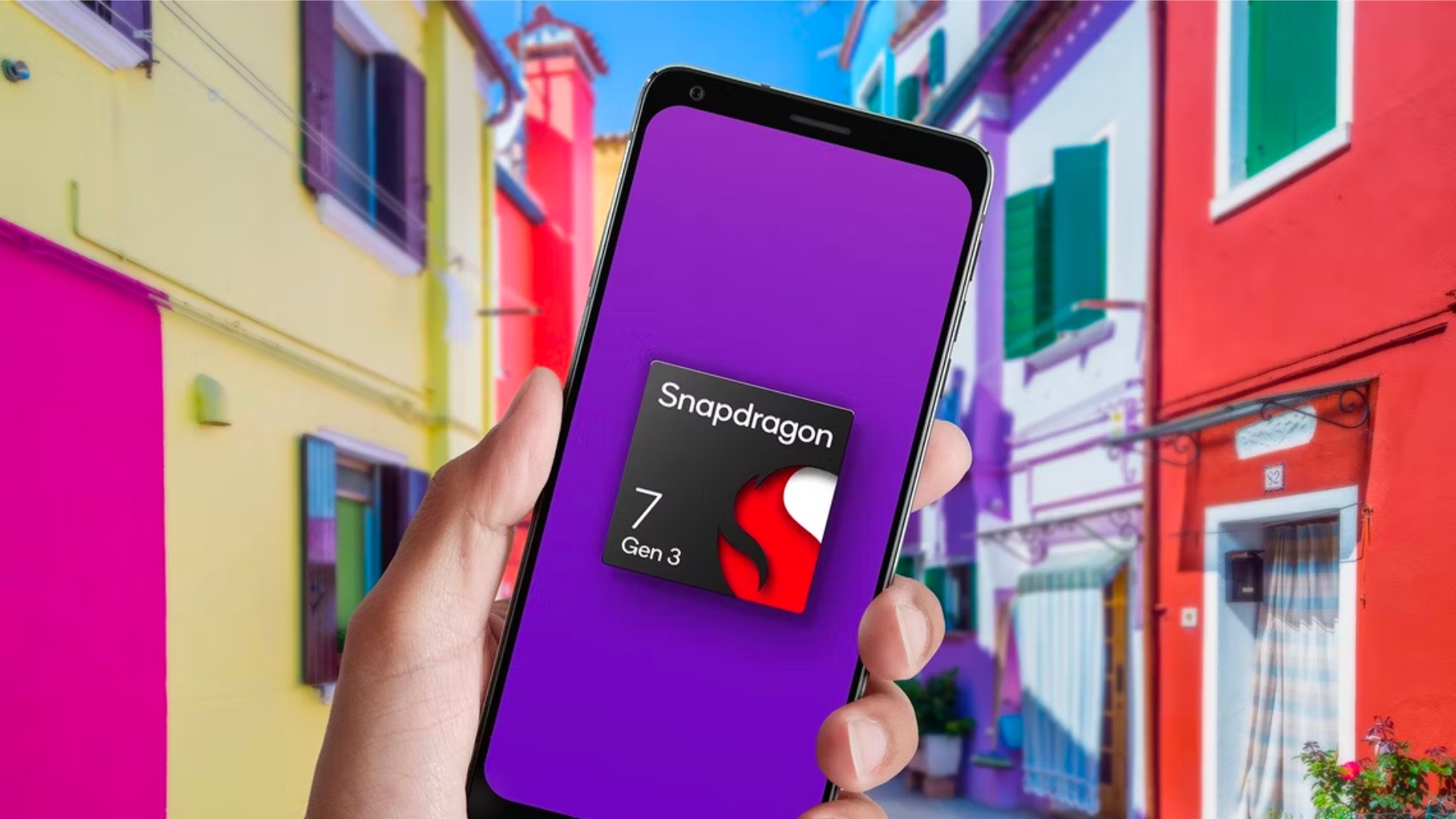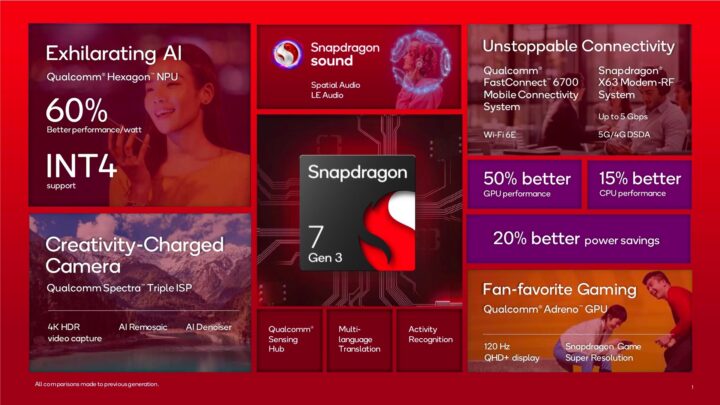After launching the Snapdragon 8 Gen 3 processor last month for flagship smartphones, Qualcomm has unveiled its new higher mid-range chipset, the Snapdragon 7 Gen 3. The naming scheme makes you believe that it succeeds the currently available Snapdragon 7+ Gen 2 or the Snapdragon 7s Gen 2, but it's not.
Let us have a detailed look at the new processor.
Snapdragon 7 Gen 3 is a successor to Snapdragon 7 Gen 1
The Snapdragon 7 Gen 3 is made using TSMC's 4nm (N4) processor, similar to the Snapdragon 7+ Gen 2. However, it uses a lower-end CPU. It has four Cortex-A715 CPU cores, of which one is clocked at 2.63GHz and the rest running at 2.4GHz. It has four Cortex-A510 CPU cores clocked at 1.8GHz. It supports LPDDR5 DRAM running at 3,200MHz. The Hexagon NPU supports on-device AI processing.
It lacks any prime CPU core like the Cortex-X2 seen on the Snapdragon 7+ Gen 2. And that's because the chipset is actually a successor to the Snapdragon 7 Gen 1 that was launched last year and not the Snapdragon 7+ Gen 2 that was unveiled around three months ago. The CPU is said to be 15% faster than the Snapdragon 7 Gen 1.
The Adreno 720 GPU inside the Snapdragon 7 Gen 3 is 50% faster than the Adreno 710 GPU inside the Snapdragon 7 Gen 1. The GPU can drive Full HD+ screens at 168Hz or QHD+ screens at up to 120Hz refresh rate. In terms of external screens, it can drive one 4K external screen at 60Hz.
It also supports OpenGL ES 3.2, OpenCL 2.0 FP, and Vulkan 1.3 APIs. It supports HDR games, too. Moreover, the new chip's AI performance per watt is 60% higher than the Snapdragon 7 Gen 1. Qualcomm also claims that its new chip is 20% more power efficient.
Snapdragon 7 Gen 3 supports 200MP camera sensors and 4K 60fps video recording
The Spectra 12-bit triple ISP (Image Signal Processor) supports up to 200MP camera sensors and up to 4K 60fps videos. It can support a 64MP camera with full-resolution 30fps frame captures with zero shutter lag. In dual-camera mode, it supports 32MP+21MP dual camera setups with 30fps full-resolution frame captures and zero shutter lag. It can also process images from three 21MP cameras concurrently at 30fps and zero shutter lag. It also supports Google's Ultra HDR format along with HDR, HLG, HDR10+, Adaptive HDR, HEIC, and HEVC formats.
Snapdragon 7 Gen 3 connectivity features
In terms of connectivity, it has a fully integrated Snapdragon X63 5G modem with support for sub-6GHz and mmWave networks in SA and NSA modes. It also supports Dual-SIM Dual-Active with dual-5G mode. Other connectivity features include Wi-Fi 6E, Bluetooth 5.3 with LE, a triple-frequency global positioning system, NFC, and a USB 3.1 Gen 2 Type-C port. Location and navigation solutions supported include Beidou, Galileo, GLONASS, GPS, NavIC, and QZSS. aptX Adaptive and aptX Lossless audio codecs are also supported. It supports Auracast, too.
For data security, it supports four biometric authentication methods: Face, Fingerprint, Iris, and Voice. It supports 3D Sonic ultrasonic fingerprint readers. Phones based on this new chip will be released in the next few days, and Honor and Vivo are expected to be the first brands to launch phones with the Snapdragon 7 Gen 3 processor.







